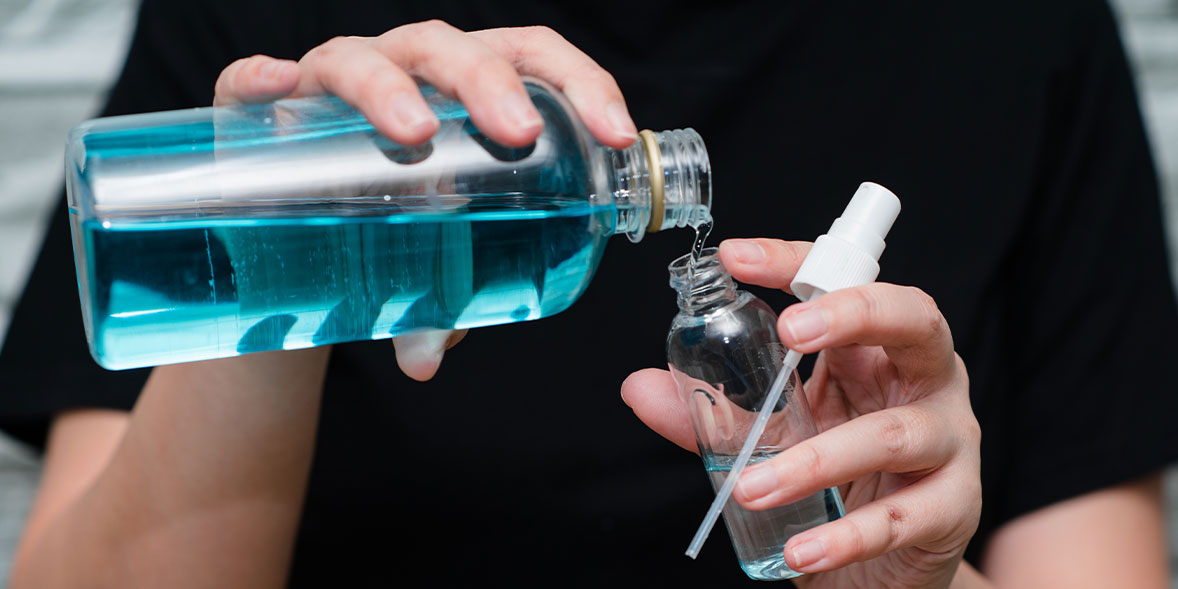
How to buy refillable products

Refillables are a growing trend in the world of toiletries and cleaning products – but do their eco claims really stack up?
The concept of refillables is simple: buy the original bottle once and then keep it and top it up using a second, more eco-friendly container. The refill usually uses a combination of less plastic, less wasted lorry space and sometimes even less water.
But how much better for the environment are refillables? And will they save you money? We’ve dug into the different types available – analysing price and packaging as well as uncovering the science behind the eco claims.
Find out more: what supermarkets are doing about plastic
What makes refillables so eco-friendly?

Picture a typical bottle of hand soap. The awkward shape of its heavy, rigid plastic means huge amounts of wasted space on the trucks that transport it. The pump is a recycling nightmare. And it contains a product that’s main ingredient is water. When you think about it, it doesn’t make much sense.
Refillable products are still pretty new and that means there’s a huge variation in their size, shape and packaging. Weighing up the validity of their eco claims is a complex puzzle. Whilst the environmental benefits are popular, they are often not as simple as they first appear for consumers, and companies are rarely clear about the reasoning behind them.
When we looked at a range of examples, all but one of the products used eco claims that focused on plastic reduction. But buying less plastic is only one part of a much more complex story. Plastic reduction is important. But so is its recyclability. And so are the overall weight, size and shape of the product, all of which have big impacts for carbon emissions during transportation.
Find out more: how to recycle in the UK
Recyclability is not the full story

Many refills come in flexible plastic pouches that are not recyclable in household collections. While this may seem counterproductive, don't let it put you off. ‘Reduce’ and ‘Reuse’ both come higher up the resource hierarchy than ‘Recycle’ and sometimes reducing packaging is worth the non-recyclable refills.
In the case of plastic pouches vs plastic bottles, while the pouches may be less recyclable, they use much less plastic. They also weigh less and take up less lorry space for each millilitre of liquid – meaning fewer emissions during transportation.
Research has shown that 30 plastic bottles require about the same amount of storage and shipping space as 840 pouches. And one truckload of flat pouches is equal to 15 to 25 truckloads of empty rigid containers.

When we investigated refillables, we found many didn't have recycling labelling or information to explain that the original container was refillable. The On-Pack Recycling Label scheme (OPRL) has launched a new set of refillable labels to help consumers get this information.
Some major supermarkets now also offer front of store drop off points for all kinds of soft and flexible plastics from carrier bags, bread bags and the type of flexible plastic often used for refillables. The aim is that these are then recycled but it is still more challenging to recycle them than plastics like plastic bottles.
How to get the best from refillables

Only a third of shoppers have actually seen refillable products on the shelves – but a huge three-quarters told us they were open to buying them.
We'd reccomend that you keep an eye out for them, as refillables are all generally better for the environment than their more traditional single-use counterparts. But some are better than others when it comes to their environmental credentials:
- Look out for brands that offer to replace the triggers or pumps on their refillable bottles free of charge to help prolong their life
- Some plastic refill pouches can be recycled through at front of store supermarket collection points or by the privately run TerraCycle scheme, which operates mainly through drop-off points.
- Buy concentrates if you can: Refilling with a concentrated tablet or solution that you dilute at home can make a huge difference to the amount of water (and therefore weight) being shipped around the world, significantly lowering your product’s carbon footprint
- Don’t let that awkward bit of handwash at the bottom of the container stop you from recycling its packaging where you can. Cleaning product packaging doesn’t need rinsing as much as food packaging before going into your recycling bin
Overall, if you’re tempted to give refills a go, the best advice is to look for concentrates where possible.
And where you can, opt for those with lighter and ideally recyclable packaging.
Or even better use a refill station (generally found at zero waste stores) where you can refill your original container from a big hopper or much larger bottle. Brands such as Ecover and Faith in Nature have a large network of independent shops where you can refill products.
Some brands offer this as a delivery service too. The Bower Collective, for example, offers free returns of its packaging which it refills and sends back out again.
Will refills save you money?
As well as being great for the environment; refillables are also fantastic for your wallet.
In our 2021 investigation, we looked at 12 popular refillable-at-home personal and home care products (alongside their original versions). Eleven of them were cheaper per ml than their original counterparts (while one was the same price). And the savings were impressive – up to 44% in the case of the Ecover washing up liquid.



















